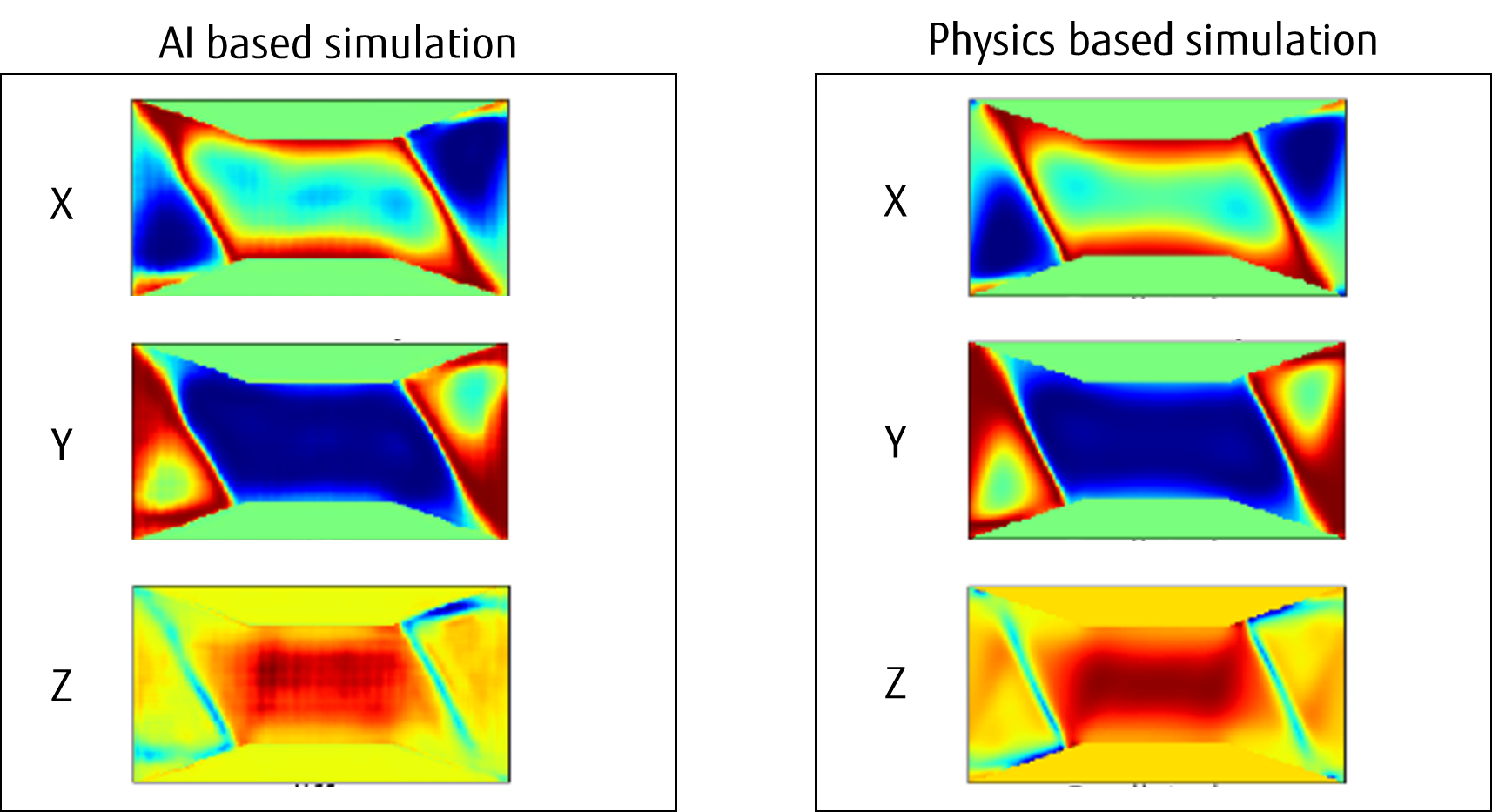New AI solver platform from Fujitsu Labs enables real-time AI simulators

Fujitsu Laboratories of Europe has developed a new AI-based technology and platform, designed to convert traditional physics-based simulators into fast, highly accurate AI simulators.
Fujitsu’s AI Solver is said to be important for industrial applications, “revolutionising fields such as CAE, product design and autonomous smart device performance”. In the case of CAE, simulation plays a key role in reducing the number of costly prototype and product failures, supporting design decisions as well as for verification and validation.
The AI Solver revolutionises the speed of the simulation process, with commensurate business advantages. The platform is the result of a joint development program between Fujitsu Laboratories Ltd, Fujitsu Advanced Technologies Ltd and Fujitsu Laboratories of Europe.
Fujitsu’s AI Solver significantly accelerates the time-to-solution for physics-based simulations, which typically involve complicated calculations that can take several hours for just one process. Fujitsu has reduced this from hours to just milliseconds, without compromising performance (< 2% discrepancy compared to physics-based counterparts).
The generation of large databases of simulation results, together with the training of large deep neural networks, are complex and time-consuming tasks. Fujitsu has combined multiple elements to achieve the performance of the AI Solver, using AI-based simulators’ deep neural network data characteristics to reproduce the behaviour of physics-based simulators and automatically create highly targeted approximations in real-time compared to hours or days. This involves learning from large databases of simulation results while data is still being generated, reducing the required time by one third.
The potential applications for Fujitsu’s AI Solver are extensive. For product design applications, it can enable designers to receive real-time feedback rather than waiting hours for results. For smart devices, involving robots that need to adapt to their environment autonomously, real-time simulation results would dramatically increase both efficiency and autonomy compared to the use of simple heuristics.

Heat transfer simulation results
Dr Adel Rouz, CEO of Fujitsu Laboratories of Europe explains: “While the advent of HPC and cloud computing has transformed the simulation process by reducing the associated hardware and software costs, we have not yet seen this translated into a significant reduction in the time taken to perform individual simulations. The conversion of traditional physics-based simulators into AI simulators is an important breakthrough, bringing the time taken for a single simulation down from hours to milliseconds, thus delivering real-time results.”
“A key challenge for us was being able to incorporate all the features of the original solver rather than only allowing users to modify the geometry. Additionally, this had to be achieved in a consistent and generic way, rather than on a case-by-case basis. While in the short term our technology targets traditional users of CAE such as designers, the potential applications go well beyond product design and include increasing the efficiency of smart devices, such as robots, when guided by real-time simulations rather than heuristics.”
Mr Akihiko Miyazawa, CEO of Fatec elaborates from the design perspective: “Design for electronics devices is a complex, demanding task that necessitates balancing numerous competing objectives with component arrangement, stringent temperature constraints, size restrictions, weight limitations and widely varying operating conditions.’
“In addition, designers are forced to evaluate multiple design scenarios in tighter schedules, making physical prototyping for the evaluation of design alternatives both time-consuming and costly. To address these challenges, designers can now use AI simulators, allowing them to test a design virtually in order to gauge performance for numerous scenarios in a very short timespan. As a result of Fujitsu’s breakthrough technology, the whole process is dramatically optimised.”

Micromagnetics simulation results
Examples of Fujitsu’s AI Solver platform include the conversion of two very different types of physical simulators into AI simulators. The first involves a 3D heat transfer simulator that models the thermal interaction between solids and fluids, often used to design and verify the cooling of electronics. It consists of a multi-physics simulation that requires the handling of multiple material properties, power sources and radiation.
The second example is a computational electromagnetic simulator that models the magnetisation of a solid that is subjected to the influence of an external magnetic field, often used for the design of hard drive heads or other memory devices. As shown in the examples below, the results of the reference physics-based simulators and their AI counterparts are almost indistinguisble, i.e., the discrepancy is less than 2%.
Fujitsu Laboratories of Europe is a Centre of Excellence for Fujitsu’s advanced research into Machine Learning and Deep Learning, as part of the digital solutions and services being developed under the Fujitsu’s Human Centric AI approach Zinrai. Fujitsu Laboratories of Europe’s activities include extensive collaboration and co-creation with Fujitsu customers and research organisations across Europe, including San Carlos Clinical Hospital in Madrid (with the HIKARI AI intelligent healthcare solution), and the University of Seville (data analytics for tourism applications).
Comment on this article below or via Twitter @IoTGN
